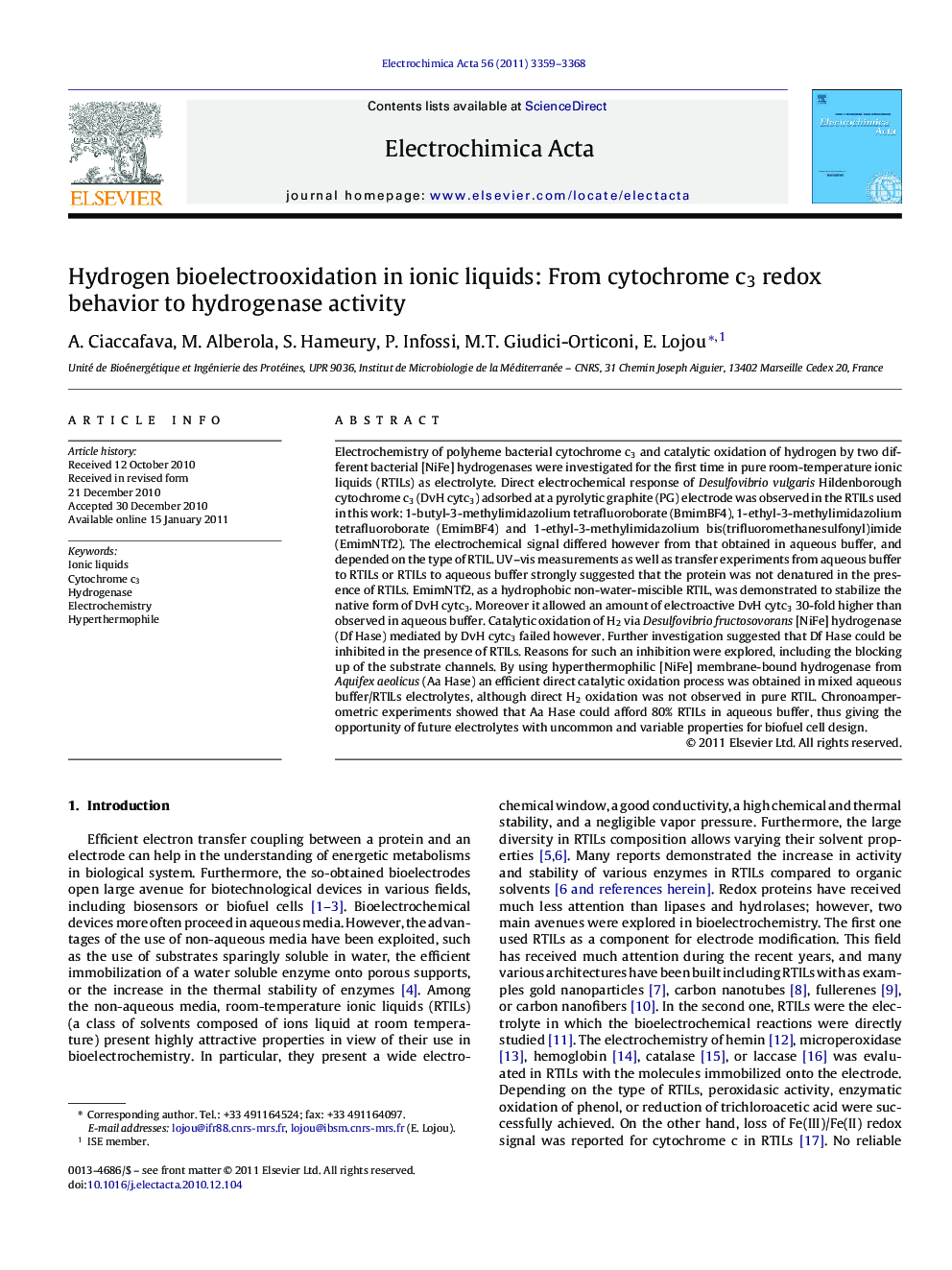| کد مقاله | کد نشریه | سال انتشار | مقاله انگلیسی | نسخه تمام متن |
|---|---|---|---|---|
| 189841 | 459686 | 2011 | 10 صفحه PDF | دانلود رایگان |

Electrochemistry of polyheme bacterial cytochrome c3 and catalytic oxidation of hydrogen by two different bacterial [NiFe] hydrogenases were investigated for the first time in pure room-temperature ionic liquids (RTILs) as electrolyte. Direct electrochemical response of Desulfovibrio vulgaris Hildenborough cytochrome c3 (DvH cytc3) adsorbed at a pyrolytic graphite (PG) electrode was observed in the RTILs used in this work: 1-butyl-3-methylimidazolium tetrafluoroborate (BmimBF4), 1-ethyl-3-methylimidazolium tetrafluoroborate (EmimBF4) and 1-ethyl-3-methylimidazolium bis(trifluoromethanesulfonyl)imide (EmimNTf2). The electrochemical signal differed however from that obtained in aqueous buffer, and depended on the type of RTIL. UV–vis measurements as well as transfer experiments from aqueous buffer to RTILs or RTILs to aqueous buffer strongly suggested that the protein was not denatured in the presence of RTILs. EmimNTf2, as a hydrophobic non-water-miscible RTIL, was demonstrated to stabilize the native form of DvH cytc3. Moreover it allowed an amount of electroactive DvH cytc3 30-fold higher than observed in aqueous buffer. Catalytic oxidation of H2 via Desulfovibrio fructosovorans [NiFe] hydrogenase (Df Hase) mediated by DvH cytc3 failed however. Further investigation suggested that Df Hase could be inhibited in the presence of RTILs. Reasons for such an inhibition were explored, including the blocking up of the substrate channels. By using hyperthermophilic [NiFe] membrane-bound hydrogenase from Aquifex aeolicus (Aa Hase) an efficient direct catalytic oxidation process was obtained in mixed aqueous buffer/RTILs electrolytes, although direct H2 oxidation was not observed in pure RTIL. Chronoamperometric experiments showed that Aa Hase could afford 80% RTILs in aqueous buffer, thus giving the opportunity of future electrolytes with uncommon and variable properties for biofuel cell design.
Journal: Electrochimica Acta - Volume 56, Issue 9, 30 March 2011, Pages 3359–3368